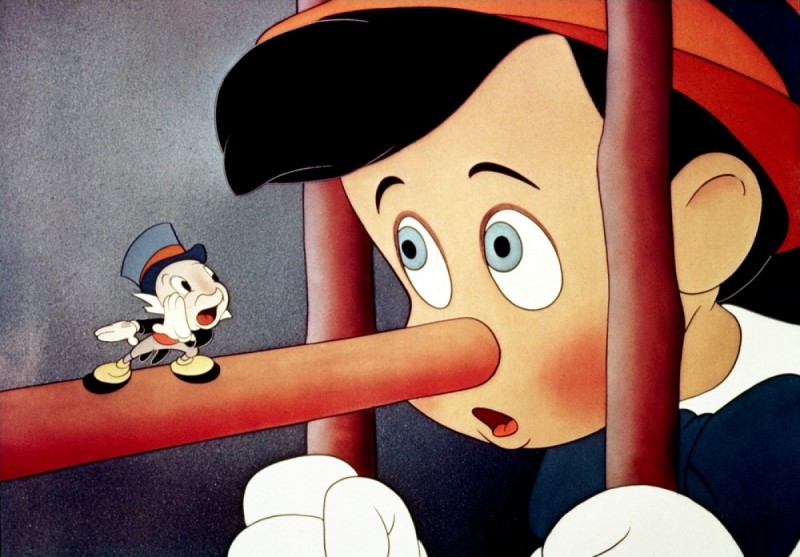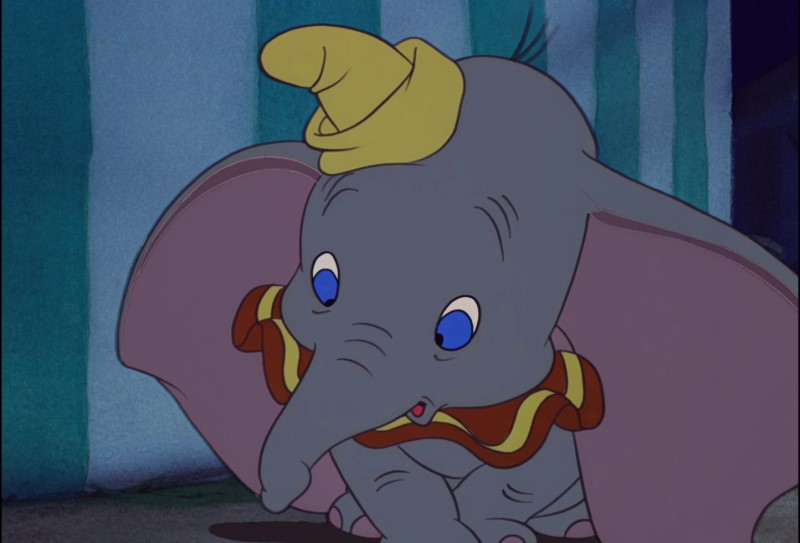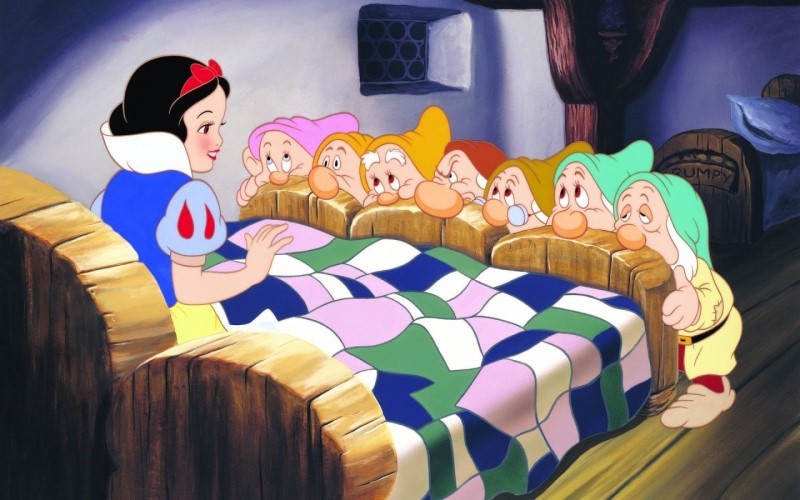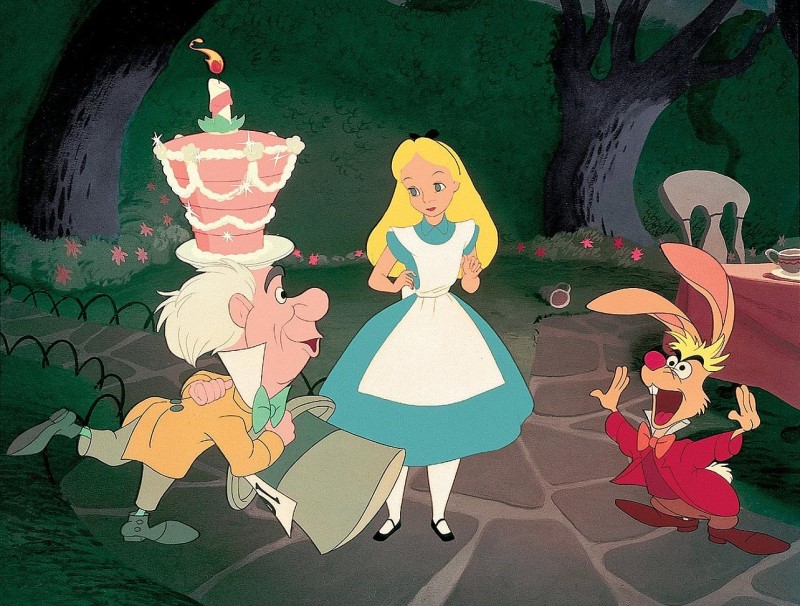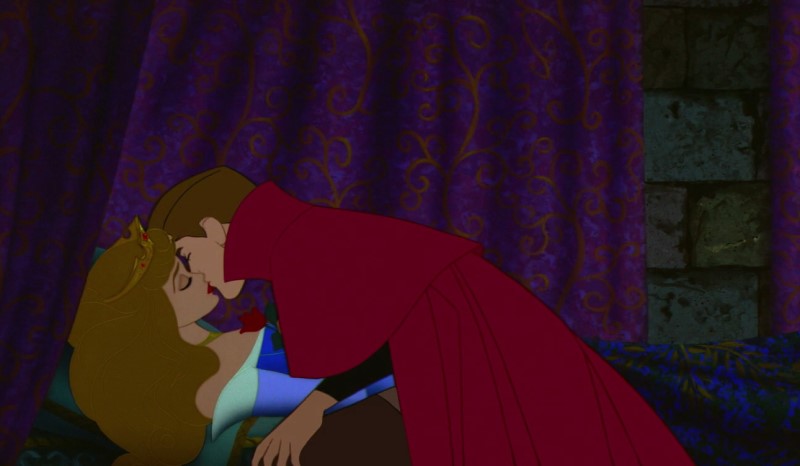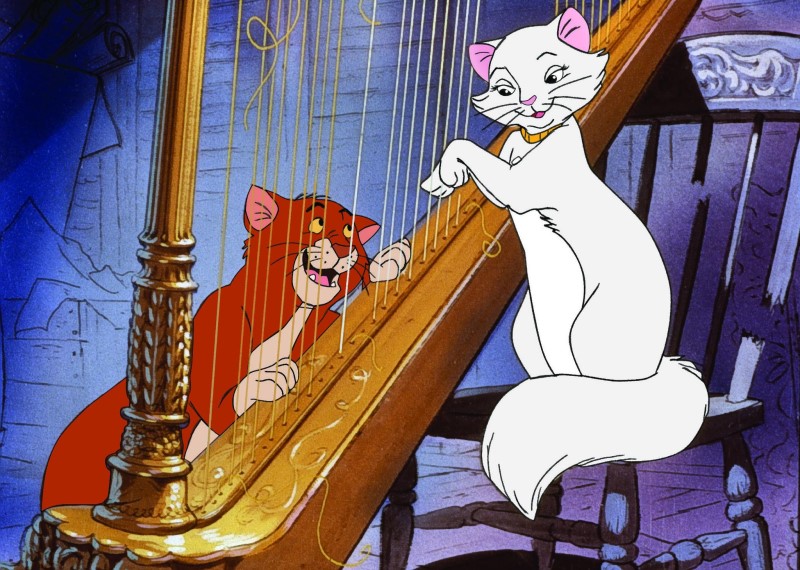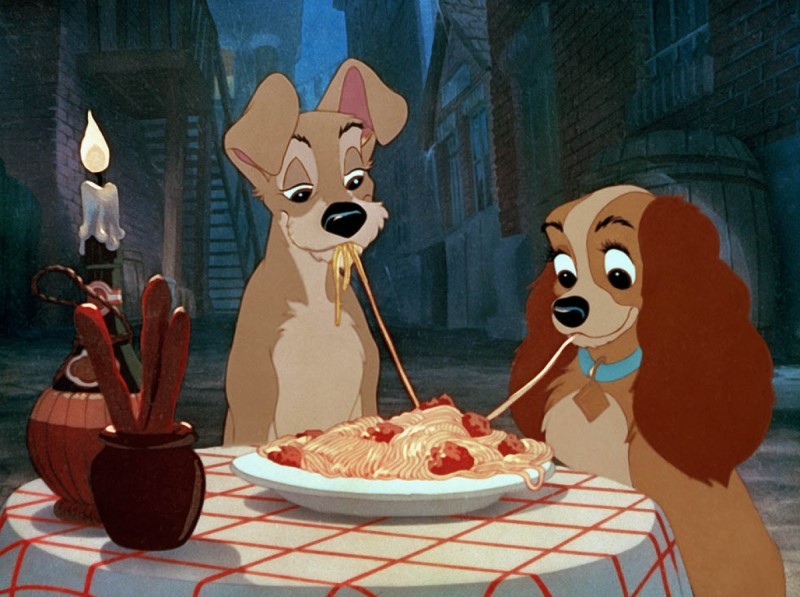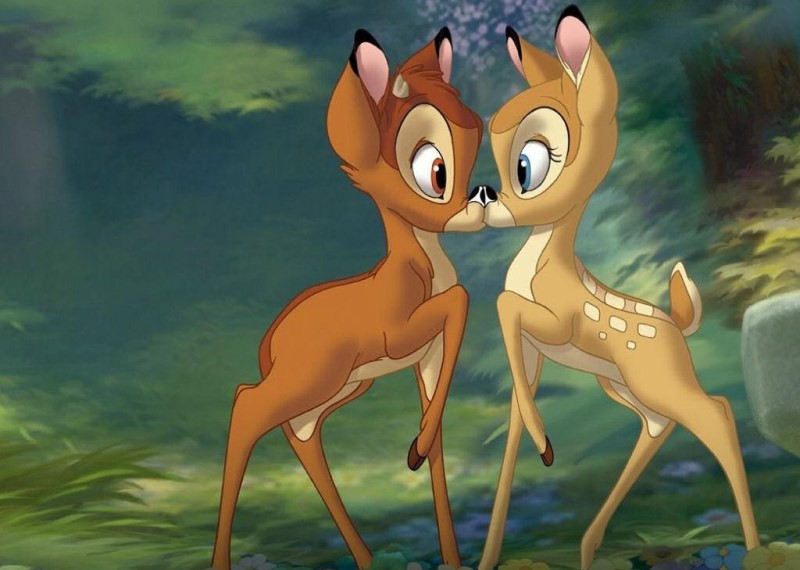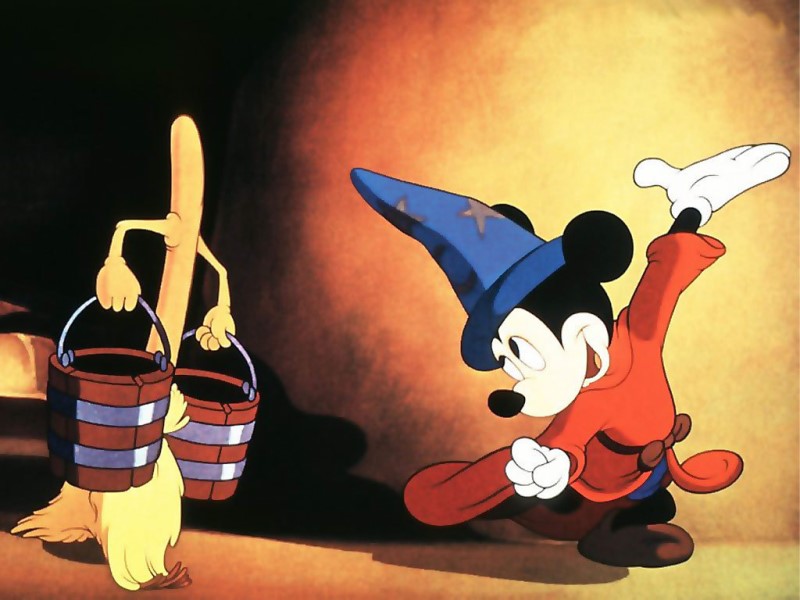Walt Disney had a clear vision of the types of movies he wanted to make, whether they starred ‘real’ people or cartoon characters. He employed only the best artists and cartoonists and set the bar for his animated movies very high indeed. The result of his exacting standards and attention to detail has seen his animated movies remain popular with people of all ages, from infanthood to great old age, even after many decades. This top ten features some of the older movies; the true classics that have stood the test of time, in some cases even after a fairly lukewarm reception to their original release!
10 Dumbo (1941)
Dumbo was produced in 1941 and is the charming tale of the birth of a baby elephant to a circus elephant. Dumbo, properly called Jumbo Jr., but nicknamed Dumbo by the unkind colleagues of his mother, is left alone when his mother lashes out at a cruel boy who teases Dumbo. A friendly mouse takes the little elephant under his wing and ends up teaching him to fly, to the amazement and delight of a small flock of wise-cracking crows. With the express aim of being a money spinner the movie uses simple pictures set upon watercolour backgrounds and runs for just over an hour, making it the shortest Disney feature film. Interestingly, the scene where the clowns plot to ‘hit the big boss for a raise’ is based on a genuine strike amongst the animators that broke up the friendly ‘family’ feel of the studios when animators wanted to join a union. Despite (or perhaps because) of its simplicity the movie remains a lovely, poignant story about growing up and learning to survive away from the protection and love of the family.
9 Snow White and the Seven Dwarfs (1937)
The year 1937 saw a daring new innovation from Walt Disney: his first ever full-length animated feature film! While in production Walt Disney was derided for attempting such a foolish project, he had to mortgage his home and eventually spent over a million dollars on the production – a huge sum to invest in those days on any movie, never mind on an untried and untested medium! However, Disney’s faith in himself was rewarded with many of his critics being completely won over when they saw the film, even giving it a standing ovation at the first screening! The movie went on to make nearly 8 million dollars after its first release, 3.5 million of that in the USA. The movie was then re-released in 1944 to help the studio make it through the lean war years and this set a precedent, with the movie being re-released regularly after that: 1952, 1958, 1967, 1975, 1983 and 1993. The story is a familiar one to most children, being based on a popular children’s fairy-tale, but is beautifully brought to life by the charming animals, the delightfully charismatic dwarfs and the pure nastiness of the wicked stepmother. One of the more famous points about the movie is the fact that it won an Oscar, and Disney was, charmingly, presented with one big Oscar and seven little ones by child star Shirley Temple.
8 Pinocchio (1940)
Pinocchio could be a tragic tale if viewed differently: a man so lonely that he carves himself a ‘son’ to talk to, teach and play with, and yet even this custom-design ‘child’ leaves the old man, wandering off with all sorts of undesirable characters until the very end, when the man is frail and on the point of letting go of life… And yet, Carlo Collodi’s rather chilly story has warmth, hope and charm injected into because of the very human regrets and sorrows expressed by the puppet. Disney infused the story with his characteristic delight and joy, adding touches like the beautiful goldfish Cleo, the truculent kitten Figaro and, of course, Jiminy Cricket with his pride in being made Pinocchio’s conscience and his attempts to help Pinocchio to follow the right path. The villains, Honest John and Gideon (the cat and the fox), Stromboli the sadistic puppet-master and the evil Coachman are brilliantly portrayed and the audience is carried along, hoping that Pinocchio will spot the trap he is innocently strolling into before it is too late for him and Geppetto, waiting patiently at home. After adventures and ructions on Pleasure Island the pair is reunited in the belly of an enormous whale, Monstro, from which they escape, before Pinocchio finally becomes a real boy and, presumably, they live happily ever after.
7 Cinderella (1950)
Cinderella, produced in 1950, turned out to be a huge financial success for the studio, its best box-office hit since Snow White and a movie that helped pull the studio out debt and set it up for the future. Once again, based on a very familiar fairy-tale, the simple story line was enhanced by the detailed animals, whose movements were accurately portrayed despite their very human habits of wearing clothes and singing! Approximately 90 per cent of the movie was acted out so the animators could see how to replicate the flow of steps and the motion of fabric in their drawings. The detailed backgrounds, like so many Disney animations, were painted with gouache and oil (only Dumbo and Snow White used watercolour backgrounds, although this was resurrected for the much later Lilo and Stitch). The charm of Cinderella led to there being not one but two sequels, following on the story of Cinderella and her somewhat dysfunctional family. Cinderella was the first of Disney’s movies to have a copyrighted sound track, including the innovative Sing Sweet Nightingale in which the singer sang in harmony with herself, the first time anything like this had been attempted.
6 Alice in Wonderland (1951)
Lewis Carroll’s fantasy adventure is beautifully brought to life by Disney’s skilful animators! Disney was familiar with the Alice books (‘in Wonderland’ and ‘Through the Looking Glass) having read them as a school-boy. As early as the Twenties Disney experimented with the bringing the tales to life, creating a short never-to-be-released film entitled ‘Alice’s Wonderland’, and he continued to think about a full-length feature film produced by his own studio. The idea was examined and shelved repeatedly throughout the 30s and 40s, finally being dusted off in the late 1940s and the characters and stories finalised. Disney removed much of the dark side of the story, leaving the fun, charm and whimsy of Wonderland, and retaining much of Carroll’s humorous prose and poetry. Despite its current popularity Alice was poorly received by fans of Lewis Carroll and by purists who felt that Disney had Americanised (and therefore corrupted, was the unspoken but evident addenda) a pure British classic. Disney was philosophical about this, but the movie performed less well than expected overall and was not thought to be one of his successes until some twenty years later when it gained something of a cult following.
5 Sleeping Beauty (1959)
Produced in 1959 Sleeping Beauty was the last animated fairy-tale film to be produced by Disney during Walt Disney’s life time (the next big feature film was to be the Little Mermaid in 1989). The film was received quietly at the box office and garnered something of a garbled critical reception too; hence Disney’s abandoning of the genre. The film took almost ten years to make, taking up much of the 50s. The music score alone, taken from Tchaikovsky’s Sleeping Beauty ballet took most of 1957 to record to his satisfaction, while animation took five years: from 1953 to 1958. This was the last Disney feature film to use hand inked cels (celluloid sheets upon which the animators drew) but Disney upped the stakes by demanding ever more detailed backgrounds, which, thanks to industry advances, he received. The prince is unique in Disney tales in that he was given a name; one familiar to most people in the 50s: Phillip, after the Queen of England’s husband! The story’s greatest strengths come from the splendid contrast between the three good witches and Maleficent’s magnificent dark elegance: embodiment of the battle between good and evil!
4 Aristocats (1970)
Aristocats was the last project to be approved by Disney before his death (although he was already working through a project that became The Rescuers, even though it would not be released for some years after his passing.) Unlike the ill-fated fairy-story films, The Aristocats received positive reviews and performed well financially. One of the unique pieces of trivia about Aristocats is that much of the crew had been with the studio for an average of twenty-five years and included five of Disney’s ‘Nine Old Men’ (The Nine Old Men, all acknowledged Disney legends, are now deceased, but were the original animators of those first heady animated films, the ones that set Disney’s star high). Following musical fashion the sound track features lively swing and jazz numbers that had audiences bouncing in their seats as they followed the adventures of the cat family from the French countryside back to their elegant home in Paris, with the help of the charming rogue O’Malley and his friends. Audiences left the cinema agreeing with the sentiment of the song ‘Ev’rybody Wants to Be a Cat’!
3 Lady and the Tramp (1955)
Lady and The Tramp is a heart-warming tale about a lovely, sheltered spaniel who meets a rough and tough stray called the Tramp, who is a schnauzer cross. Fleeing her home after a misunderstanding Lady meets up with Tramp who shows her how the other half live. The story is based on the real life antics of a dog owned by one of Disney’s writers, Joe Grant. Amused at how their English springer spaniel, also called Lady, had been displaced by the birth of their child, Jo approached Disney with a handful of sketches of his dog. Walt enjoyed the idea very much, but was inspired to combine the story of the delicate and well-mannered Lady with that of a rougher, tougher dog like those found in stories like Ward Greene’s ‘Happy Dan, the Whistling Dog.’ At first there was some doubt over the suitability of the name Tramp, given the slight sexual overtone that might be deduced from the title (that is to say its similarity to ‘The Lady is a Tramp’) but Disney gave the name the green light. Charmingly, the way Mrs Darling finds Lady inside a hat box at Christmas time is based on the way Walt Disney gave his wife a chow puppy. One of the most iconic scenes in the entire film, the spaghetti eating sequence was almost cut by Disney as he was not sure if the movement and content of the scene would work well and feared it would look ridiculous. Fortunately, he was satisfied with the way the scene played and it was left in.
2 Bambi (1942)
Bambi is based on a story by an Austrian writer, Felix Salten, and details the life of Bambi, a fawn, and his friends. The rights to the story were originally snapped up by MGM with the intention of making a real life action film from the story. However, the difficulties were numerous and eventually the story was sold on to the Disney studio in 1937, where it was supposed to become the second animated feature film. However, there were difficulties with both recreating the movements of the animals accurately and with transforming a fairly grim, adult story into a light-hearted and fun family feature and the story was shelved for a short time. In order to overcome the issues with the animal movements Disney hired a lecturer to come and speak to his animators, as well as sending them out to the zoo to watch the creatures walking around, feeding and playing. Disney even brought a small menagerie of rabbits, skunks, ducks, owls and deer to the studios so that the animators’ impressions and understanding of their physiology would stay fresh as they crafted each scene. The most moving scene in the movie is, obviously, the one where Bambi’s mother is shot by the hunters, and the young Bambi has to learn to survive without her. This scene is memorable to many children and adults as being their first introduction to the finality of death and the sadness associated with it.
1 Fantasia (1940)
Disney wanted young children and families to appreciate beautiful music, without feeling that it was stuffy or ‘posh’. In order to realise this he created eight pieces of animation, one of which featured a come-back for Mickey Mouse, who had fallen out of popularity slightly, as the Sorcerer’s Apprentice set against exquisite compositions by musical heavyweights like Bach, Schubert, Stravinsky and Beethoven. Because the music had to be of such high quality, recording it was a lengthy and expensive process, requiring the latest audio technology and the best skills of the Philharmonic Orchestra. At over two hours long the film could not be released as a standard film, and went on the road instead, with tickets being booked in advance. This, plus the classical music, gave some of the target audience the idea that Disney had gone ‘high-brow’ and dull, which meant that they generally stayed away. The show did better on Broadway, with a custom-built stage, designed to play the music at the level and volume of a live concert for a realistic experience. The show was very expensive to put on and the advent of the Second World War saw the show making very little money at the time. However, since its re-release as a shorter film Fantasia has, in the end, seized the hearts and minds of the audience and there are few Western children who cannot hum along with these most beautiful pieces of classical music – much as Disney originally hoped!

